New exosuit helps runners sprint faster
Case Study: Glide-Line’s Zero Contact Zoned Conveyor For Integrator, Mid-South Industrial Automation
MilliMobile is a tiny, self-driving robot powered only by light and radio waves
EU Automation publishes new guide: How to Get Robotics Right – Avoiding the Common Costly Mistakes of Automation Adoption
A short guide to Multidisciplinary Research

This guide to ‘colliding opposite disciplines with your research’ is intended to help students and researchers, or indeed anyone who might otherwise be looking for some ideas on how to approach research or methods for designing concepts and solutions, to broaden their thinking and approach to research. This guide is mainly focused on the disciplines of science and engineering with the idea of collaborating with other distinct disciplines. However, the overall principles remain for any multidisciplinary research.
The guide is written into three different sections;
- Is it all just hot STEAM?
- When worlds collide.
- The common goal – how can I develop my multidisciplinary research?
With the assistance of this guide, it will help to open new ways of thinking about research, highlight the ‘unseen’ benefits of multidisciplinary approaches to research and how they can be extremely advantageous and can lend for an optimal delivery. It will help you to contemplate how, when, and why you should open up your research to other disciplines.
Is it all just hot STEAM?
If we think of the Arts and Science then I think, for the most part, that people would think of them as opposites. People are either ‘arty’ or ‘science-y’. A large factor in this thinking may come from the fact that people are seen as left-brained or right-brained, where one side of the brain is dominant. Left-brained thinkers are said to be methodical and analytical, whereas right-brained thinkers are said to be creative or artistic. What should happen, though, if you were able to work across these two separated sides and create whilst you analyse?
Do we need to get out of this thought, that art and science don’t belong together? I would firmly argue that we do.
The acronym STEM is widely known as Science, Technology, Engineering and Mathematics. However, another acronym, possibly less well known, is STEAM. STEAM is Science, Technology, Engineering, (liberal) Arts and Mathematics. This represents all aspects of art such as drama, music, design, media and visual arts. STEM primarily focuses on scientific concepts, whilst STEAM investigates the same concepts, but does this through investigation and problem-based learning methods used in an imaginative process.
The application of the arts to science is not a new practice Leonardo DaVinci is an early example of someone using STEAM to make discoveries and explain them to several generations.
There are many advantages to applying the arts to science and engineering. For example, would increasing application of the arts to science and engineering make more young people want to do science and engineering as it looks visually more attractive and significant? Could it help them develop a love for the STEM subjects and support them to seeing it as being more relatable than a Bunsen burner in a school laboratory.
A prime, and very recent, example of STEAM being applied was the crewed Space-X launch of the Dragon capsule in 2020. This launch represents the essence of advanced technology that is both on the forefront of science and engineering development as well technological aesthetics. From the design of the sleek logos, through to the futuristic spacesuits and even continuing onto the matt black launch platform, it was clear throughout this launch that every single detail had been considered.
Some may argue that by adding this artistic touch to technology that the ‘nitty-gritty science’ of the design and aesthetic becomes lost. If something doesn’t ‘look’ complicated and complex can it really be advanced or sophisticated? Well yes! Have you ever heard the saying “when someone makes something look simple, they have spent hours perfecting it” Take for example the space suits and touch screen controls of the Dragon SpaceX launch. The suits look like they were designed for a film set of Hollywood’s renditions of Space travel. A spacesuit without oxygen inlets, pressurized helmets and fitted to individual body contours.
To the layman, these may simply look like pleasant visuals. Though, to the trained eye and relevantly knowledgeable mind the pure fact that these two components of the flight look so streamline and simplistic not only nods to but reinforces that all aspects of the flight was saturated in superior engineering from hundreds of magnificent minds. That is the beauty of STEAM.
When worlds collide
There are several advantages to multidisciplinary research. Now more than before, there has been focus on research becoming more multidisciplinary. As the world is in the fourth industry revolution (Industry 4) and with constant and significant advances in technology and AI there is increased necessity for research to meet complex and substantial scientific and engineering global challenges. Consider, a real-world problem, either one you know something about or one you are researching. Completing all aspects of this issue and its application you will notice that, repeatedly, it cannot be confined to one single discipline.
A multidisciplinary environment in research allows for different theories, methodologies, modes of thinking (convergent, divergent and lateral) and perspectives to come together for one common goal and purpose. The beauty of multidisciplinary research sits within this divergence of thinking, approaches, and theories which provides a much broader context to create innovate and bespoke discoveries and solutions.
In research, it can often be the case that students or academics end up working in quite a niche area of research, which of course has great advantages of its own as one can become a leading expert in a particular field. However, when a specific piece of research is presented that needs expert knowledge and experience from another field or discipline it can be difficult for an individual to become skilled or versed enough (often within pressing timelines) to lead on that area of the work. Here, a multidisciplinary environment/team will allow for contributions and skilled knowledge from other disciplines to have input without all researchers having to masters each other’s skills and knowledge but to only understand.
Often, an effective way to further show value and demonstrate a concept is to lead by example…
Consider the discipline of robotics. A robot represents a wide array of disciplines.
In a true multidisciplinary approach, there is great research capability in designing and building new robotic systems, that offers the ability to apply bespoke robotic based solutions to a range of applications.
In the case of social and healthcare robotics. Here, robotics represents aspects of electrical/mechanical engineering, material science, psychology, and medicine. In these environments, robots are much more than circuitry and AI. Other disciplines come from the end user requirements, the operational environments, and bespoke requirements/purposes.
Design in robotics is something that is often overlooked. However, it is extremely important in the creation of robotic solutions for both end users and client requirements. The physical appearance of a robot can affect presumptions and expectations of how a robotic system should or will perform.
Aesthetics, more than one is conscious of, influences aspects of our lives, and the decisions we make. The collaboration of the arts/design and robotics can be particularly effective towards increasing trust in robots. Establishing human-robot interaction (HRI) trust is especially pertinent where robots are being used in individual personal and healthcare roles.
For several years, it has been recognised and understood that trust is a crucial aspect of effective human-robot interaction for social robots as it closes the discipline gap between human psychology and artificial intelligence (AI).
A robot’s physical appearance can positively or negatively affect a human’s interaction with a robot. Just as humans can make decision upon first meeting someone, a human can make a similar decision based on the first impression when interacting with a robot for the first time. As a result, co-design improves the engagement and the quality of the interaction between (multidisciplinary) researchers and the end user. In the cases of healthcare or surgical robotics, it should be instinctive for a researcher to involve a person from a medical background, such as surgeons and/or medical device developers, to co-create a robotic solution fitting to the healthcare issue. To create ‘sightless’ to the knowledge and experience of the real life reality and important key issues that must be considered and adopted would be developing from a position of being completely ignorant to the challenge and effective solution.
Sustainability is a major current area of research, sustainability for the world and sustainability for technology research and development. Considering sustainability in robotic technology development the factors that should be considered, for example, are the choice & quantity of materials, the possibility of using recycled materials (e.g. in soft robotics) and effective design to limit single use robotics, or inefficient processes. This research is a topic of a truly multidisciplinary nature. How can this be considered or deciphered? It can be broken down in the resulting way;
- Considerations – material choices, quantity of materials, effective & efficient design.
- Following considerations – where do the materials come from, how does the technology affect the environment and society.
- Draw out research points – lithium batteries, mining, supporting jobs roles or taking job roles, damage to environment, moving local communities.
- What disciplines do we need? – material scientists, chemical scientists, robotics engineers, policy makers, lawyers, sociologists, economists.
The common goal – how can I develop my multidisciplinary research?
A multidisciplinary research environment may be outside of your established or traditional research approaches or considerations. If so, there may be several questions that immediately come to mind about working in these types of collaborations. Such as how do you put together a multidisciplinary research group? Will the terminology and language across our disciplines be the same? How will other disciplines approach the problem – ‘will there be too many cooks’?
It is common that with change, new methodologies and approaches to working (especially if you are set in a certain way of doing things over many years), for there to be some initial challenges and a period of adaptation.
If you are interested to work in or create a multidisciplinary team here are some tips for developing this research approach.
- Identify and acknowledge your dominant discipline/perspective (and all that it encompasses) – this can seem like an obvious point to make and think. However, considering your discipline will make you think of the fields that sit with it and this will help to identity disciplines and fields that are completely out with your area. As well as groups or researchers that do not sit within your department or similarly researchers that may be in another group within the department that you had not considered working with before.
- Consider the research you are conducting. What are the underlying theories? Where are the natural overlaps? This can create a research ecosystem that will help you identify areas that you and others can co-create within. As a brief example, physics provides the fundamental basis for biology.
- Identify the areas of knowledge are you lacking in? What areas of knowledge do you need strengthened? Where are the gaps in your research? This will help you to identify what type of expertise you need and where to get this from.
- Next, identify who are the end users, what are the applications? This will help you think of the bigger picture of your research and what expertise should have input in the work. For example, in the case of healthcare, surgeons should have input in medical device robotics or in the instance of assisted living the end user must have input of information about their requirements and daily living situation.
- Lastly, make sure you know what you are talking about. Put together a short brief of the purpose of the work and an outline answering these key indicators listed here. Ensure this conveys the purpose and end goal of the work, the gaps and where the other disciplines can add value. Identify, the group or induvial person you think could create a beneficial multidisciplinary team and contact them to present this information to them. Of course, in certain circumstances this can lead to the development of research grants!
Recognise that there are certain points to consider such as,
- When collaborating with people from other disciplines there can be initial hurdles to overcome with how easy it is to convey your ideas to them, the languages that speak in and the ways they communicate. Take time to verse yourself in others ways of doing things and their language and methods on communicating.
- Other disciplines may not work in a factually driven way, and it could be more a creative/holistic view of thinking. Be open minded, be open to adapting to new ways of doing things. This is advantageous to you too!
- It may take some brainstorming sessions and design workshops (for instances) to get some momentum going in the work. However, take time to reflect on what has been done so far and always move forward with the same purpose and goal. Remember there was a reason that you created this team. Reflect on this.
Lastly, do not let these considerations stop or hinder your ideas of working in a multidisciplinary environment. There is so much to learn in these types of research teams, and it is always interesting, it is guaranteed. There is no research quite like the output form a team that is not confined into one discipline.
So, the next time you are designing, creating, or innovating, consider; am I letting off enough STEAM and are worlds colliding?
This work by Dr Karen Donaldson is licensed under a Creative Commons Attribution licence 4.0.
Exploring how to build better extraterrestrial robots
One hour of training is all you need to control a third robotic arm
How to Successfully Automate Packaging in Low-volume, High-mix Production
Rain Announces $9.7M in Seed Financing to Enable Rapid Wildfire Response with Prepositioned Autonomous Aircraft
Robo-Insight #5
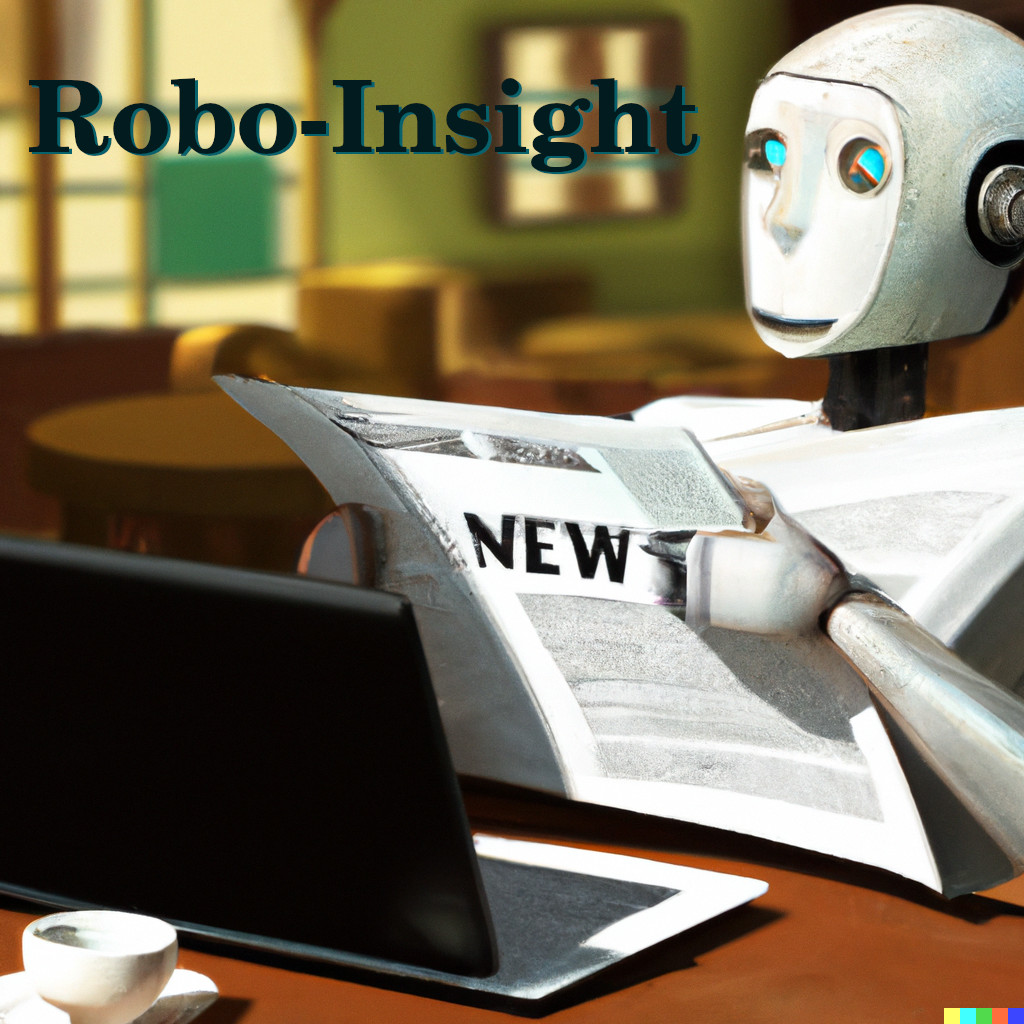
Source: OpenAI’s DALL·E 2 with prompt “a hyperrealistic picture of a robot reading the news on a laptop at a coffee shop”
Welcome to the 5th edition of Robo-Insight, a robotics news update! In this post, we are excited to share a range of new advancements in the field and highlight robots’ progress in areas like human-robot interaction, agile movement, enhanced training methods, soft robotics, brain surgery, medical navigation, and ecological research.
New tools for human-robot interaction
In the realm of human-robot interactions, researchers from around Europe have developed a new tool called HEUROBOX to assess interactions. HEUROBOX offers 84 basic and 228 advanced heuristics for evaluating various aspects of human-robot interaction, such as safety, ergonomics, functionality, and interfaces. It places a strong emphasis on human-centered design, addressing the vital connection between technology and human factors. This tool aims to facilitate seamless collaboration between humans and robots in industrial settings by ensuring robots align with human capabilities and needs, emphasizing productivity and well-being.
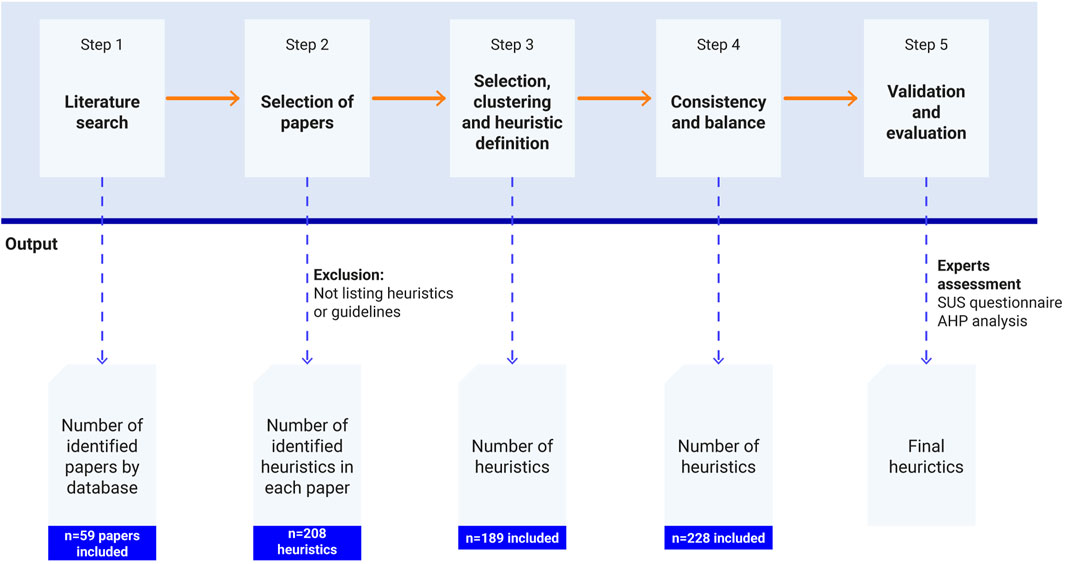
Approach for creating a novel method to assess Human-Robot Interaction (HRI) heuristics. Source.
Innovations for enhanced control in agile robotics
Shifting our focus to agile robots, researchers from Zhejiang University have designed a cable-driven snake-like robot for efficient motion in confined spaces. This robot utilizes force transducers and angle sensors to achieve precise dual-loop control. By combining pose feedback from angle sensors and force feedback from transducers, this control strategy enhances the robot’s accuracy and ensures cable force and stiffness, guaranteeing stability and reliability during motion. This innovation has significant potential for various applications, including minimally invasive surgery, nuclear waste handling, in-space inspections, and search and rescue operations in complex environments. The robot’s design and control strategy promises advancements in high-precision robotic systems for engineering applications.

CSR Overview. Source.
Better training methods in agile robotics
Keeping within the field of agile robotics, researchers from the University of Zurich have recently pushed the boundaries of this type of robots, focusing on the pivotal role of control systems within them. Their investigation pitted two key methodologies against each other: model-based optimal control (OC) and reinforcement learning (RL). Surprisingly, RL, which enables robots to learn through trial and error, triumphed in a demanding real-world test: autonomous drone racing. Not only did RL outperform but surpassed human capabilities, with the agile drone achieving an astonishing peak acceleration, exceeding 12 times gravitational acceleration, and a remarkable top speed of 108 kilometers per hour. These results illuminate the promising future of agile robotics, where learning-centric approaches like RL pave the way for more efficient control and performance in diverse applications.
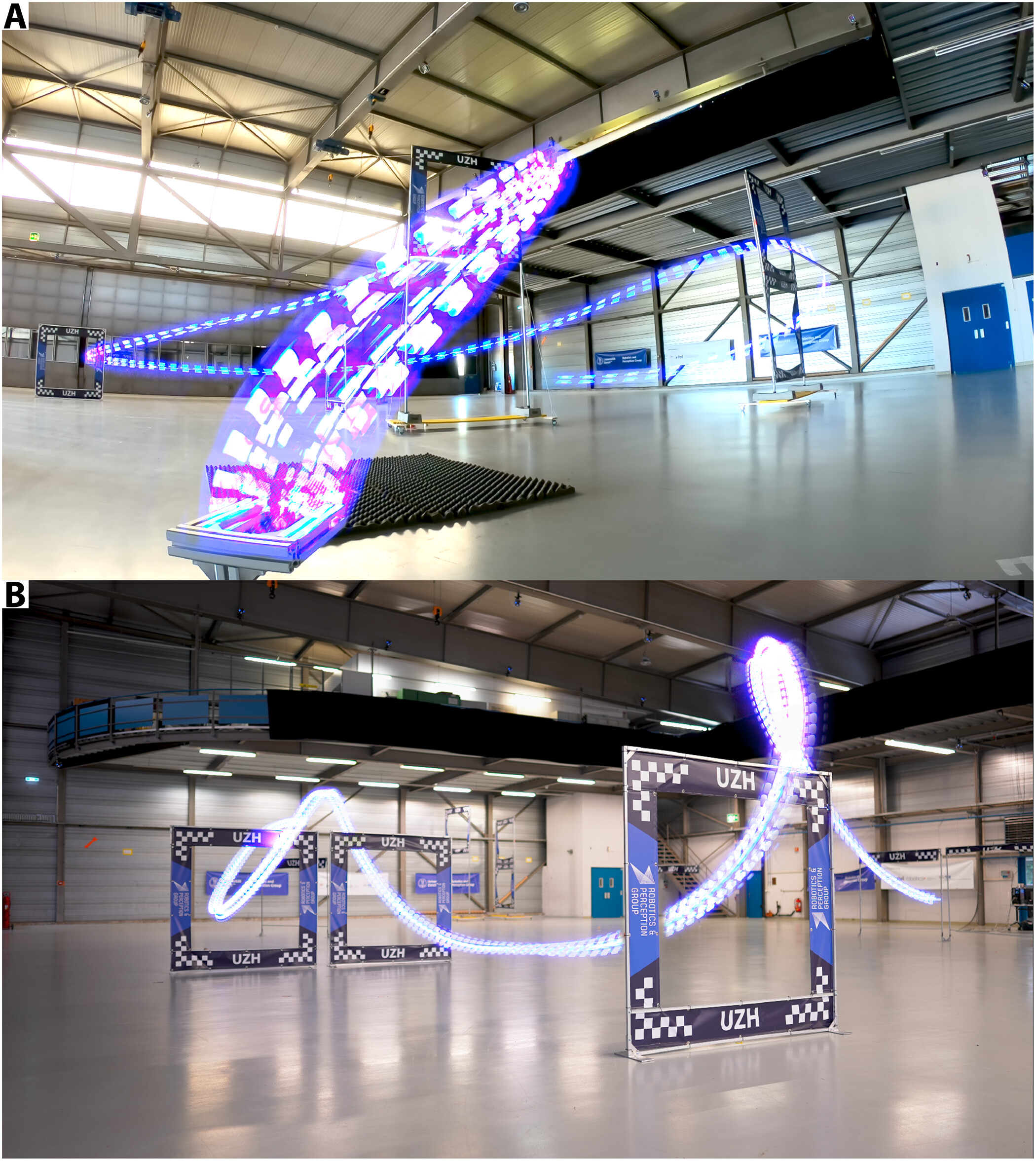
The visual progression shows a fast-racing drone being controlled by the RL strategy over time. Source.
New strong and stiff soft robots
Changing our focus to the world of soft robotics, recently researchers from Kangwon National University have presented a soft gripper robot with the ability to vary its stiffness, addressing a major challenge in the field of soft robotics. Unlike complex designs, this gripper achieves stiffness variation through a straightforward mechanism involving pneumatic control and tendons actuated by stepper motors. This innovation allows the gripper to adapt to objects of various shapes, sizes, and weights, expanding its potential applications. The study demonstrates that this gripper can increase its stiffness by up to 145% and handle weights of up to 2.075 kg. Soft robotics, inspired by natural organisms, holds promise in healthcare, manufacturing, exploration, and other fields, and this research contributes to its advancement.
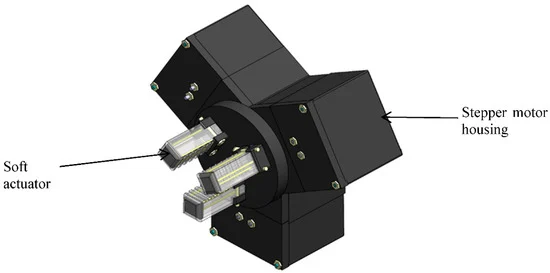
CAD design of gripper mechanism. Source.
Enhanced brain surgery robots
Turning our focus to the medical robotics world, researchers from Harvard Medical School have developed a robotic device poised to enhance neurosurgery by making it less invasive. The team introduced a novel two-armed joystick-controlled endoscopic robot designed to mimic the dexterity of open surgery but with smaller incisions. This innovation was put to the test in the context of brain tumor resection, a typically invasive procedure. Compared to conventional manual endoscopic tools, the robot offered greater access to the surgical site, enabling bimanual tasks without brain tissue compression, and often completing tasks more swiftly. These findings open the door to the potential transformation of traditionally open brain surgeries into less invasive endoscopic procedures.

Robotic tube arms with varying degrees of stiffness. Source.
An advanced robotics needle
Along the same lines as medical robotics advancements, a team of researchers led by Professor Ron Alterovitz at the University of North Carolina at Chapel Hill has developed an autonomous robotic needle designed to navigate through intricate lung tissue while avoiding obstacles and important lung structures. The needle uses AI and computer vision to autonomously travel through living tissue, making it a potentially valuable tool for precise medical procedures like biopsies and targeted drug delivery. This development represents a significant step in the field of medical robotics, offering improved accuracy and safety in minimally invasive procedures. The researchers plan to further refine the technology and explore additional medical applications.
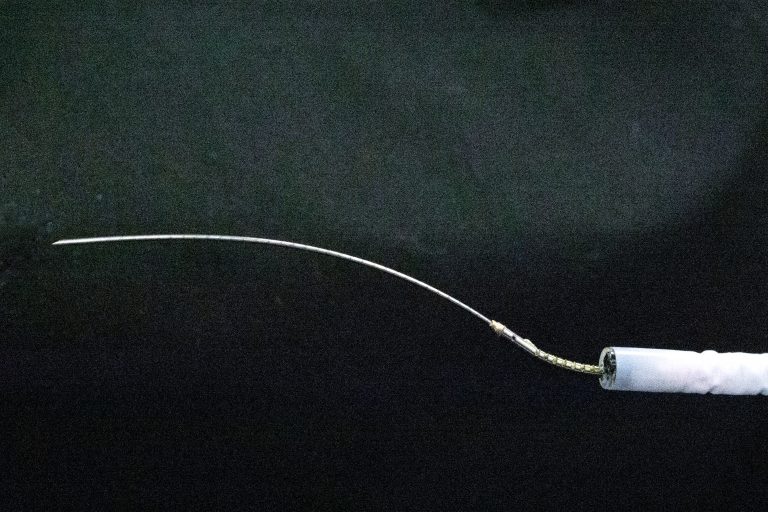
The robotic needle emerging from a bronchoscope. Source.
Robots could bee the key to ecological research
Finally, in the ecological field, robotics researchers from Durham University are teaming up with experts from various disciplines to investigate how animals are adapting to ecological challenges, with the aim of mitigating global biodiversity loss. Leading the RoboRoyale project, Dr. Farshad Arvin combines miniature robotics, artificial intelligence, and machine learning to develop robotic bees. These robotic bees are designed to interact with honeybee queens, enhancing their egg-laying and pheromone production, which influences hive behavior. This unique project focuses exclusively on queen bees, using a multi-robot system that learns over time how to optimize their well-being. Simultaneously, the MammalWeb project collects camera trap images to monitor the habits and behaviors of UK mammals, addressing the impact of climate change and human activities on biodiversity. These initiatives represent groundbreaking contributions from the robotics community to ecological research.
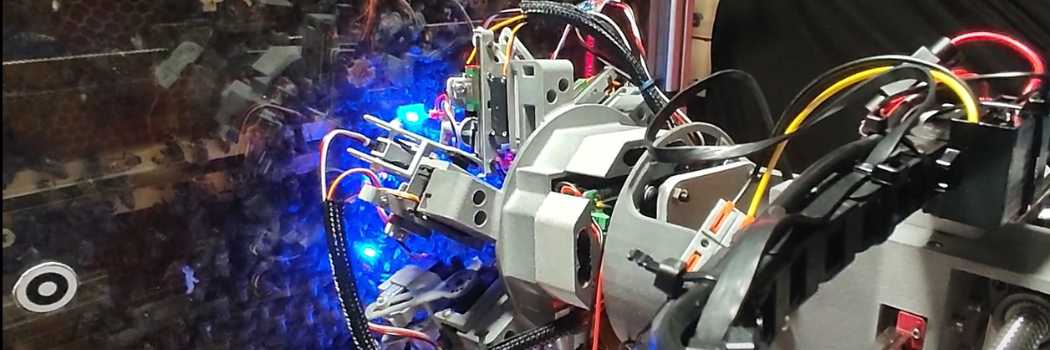
A robotic development device. Source.
The continuous evolution across various sectors underscores the adaptable and consistently progressing nature of robotics technology, revealing new opportunities for its integration into diverse industries. The gradual growth in the field of robotics reflects sustained dedication and provides insight into the potential implications of these developments for the future.
Sources:
- Apraiz, A., Mulet Alberola, J. A., Lasa, G., Mazmela, M., & Nguyen, H. N. (2023, August 16). Development of a new set of heuristics for the evaluation of human-robot interaction in industrial settings: Heuristics Robots experience (HEUROBOX). Frontiers.
- Xu, X., Wang, C., Xie, H., Wang, C., & Yang, H. (2023, September 4). Dual-loop control of cable-driven snake-like robots. MDPI.
- Song, Y., Romero, A., Matthias Müller, Koltun, V., & Davide Scaramuzza. (2023). Reaching the limit in autonomous racing: Optimal control versus reinforcement learning. Science Robotics, 8(82).
- Mawah, S. C., & Park, Y.-J. (2023, September 11). Tendon-driven variable-stiffness pneumatic soft gripper robot. MDPI.
- Price, K., Peine, J., Mencattelli, M., Yash Chitalia, Pu, D., Looi, T., Stone, S., Drake, J. M., & Dupont, P. E. (2023). Using robotics to move a neurosurgeon’s hands to the tip of their endoscope. Science Robotics, 8(82).
- Autonomous Medical Robot Successfully Steers Needles Through Living Tissue. (n.d.). Computer Science. Retrieved September 23, 2023
- University, D. (n.d.). Computer Science research to build robotic bees and monitor mammals – Durham University. Www.durham.ac.uk. Retrieved September 23, 2023
Musk’s humanoid Optimus shows progress
Elon Musk has just tweeted about his humanoid robot Optimus. It seems that the android is now capable of locating his own limbs in space and in connection with this, can learn tasks, even in a changing environment.
The video in Musk’s tweet shows that the android can sort cubes based on their colors by picking them up by its fingers and can do this even when someone keeps changing the location and orientation of cubes deliberately.
At the end of the video, the robot displays some acrobatic moves beautifully…
A very promising video indeed…
Soft robotic tool provides new ‘eyes’ in endovascular surgery
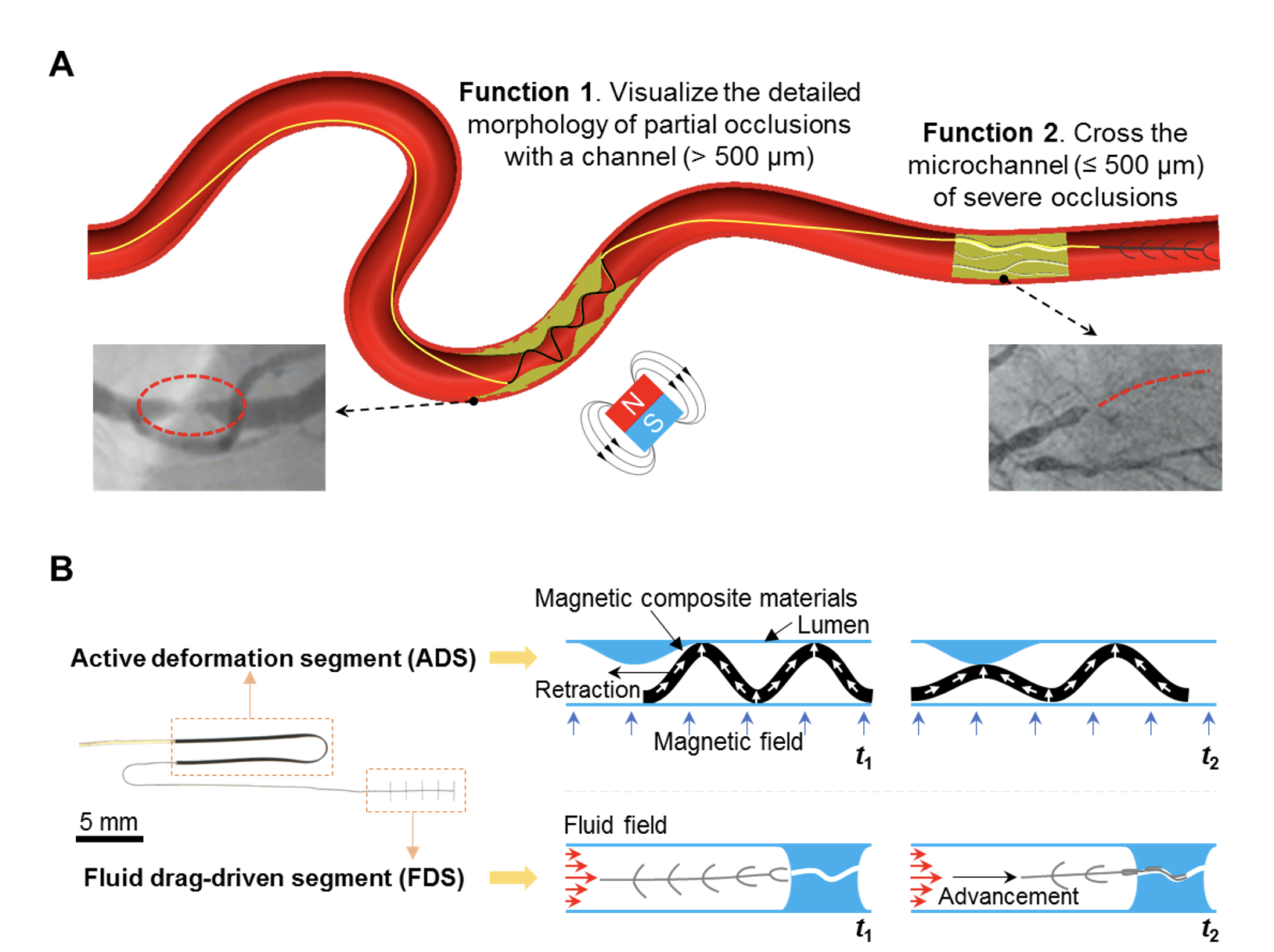
Scientists at the Max Planck Institute for Intelligent Systems in Stuttgart have developed a soft robotic tool that promises to one day transform minimally invasive endovascular surgery. The two-part magnetic tool can help to visualise in real time the fine morphological details of partial vascular blockages such as stenoses, even in the narrowest and most curved vessels. It can also find its way through severe blockages such as chronic total occlusions. This tool could one day take the perception of endovascular medical devices a step further.
Intravascular imaging techniques and microcatheter procedures are becoming ever more advanced, revolutionizing the diagnosis and treatment of many diseases. However, current methods often fail to accurately detect the fine features of vascular disease, such as those seen from within occluded vessels, due to limitations such as uneven contrast agent diffusion and difficulty in safely accessing occluded vessels. Such limitations can delay rapid intervention and treatment of a patient.
Scientists at the Max Planck Institute for Intelligent Systems in Stuttgart have looked at this problem. They have leveraged the concepts of soft robotics and microfabrication to develop a miniature soft magnetic tool that looks like a very slim eel. This tool may one day take the perception capabilities of endovascular devices one step further. In a paper and in a video, the team shows how the tool, which is propelled forward by the blood flow, travels through the narrowest artificial vessels – whether there is a sharp bend, curve, or obstacle.
When the tool reaches an occlusion like a partially blocked artery, it performs a wave-like deformation given the external magnetic field (more on that below). Then, the deformed soft body will be gently in contact with the surrounding occluded structures. Lastly, the real-time shapes of the device when we retract it will ‘visualize’ the morphological details inside the vessel, which facilitates the drug release at occlusion, as well as the sizing and placement of medical devices like stents and balloons for following treatment.
When there is a severe occlusion with only tiny microchannels for the blood to flow through, the tool can utilize the force from the blood to easily slide through these narrow channels. Which way was chosen indicates to the surgeon which access route to take for the following medical operation.
“The methods of diagnosing and treating endovascular narrow diseases such as vascular stenosis or chronic total occlusion are still very limited. It is difficult to accurately detect and cross these areas in the very complex network of vessels inside the body”, says Yingbo Yan, who is a guest researcher in the Physical Intelligence Department at MPI-IS. He is the first author of the paper “Magnetically-assisted soft milli-tools for occluded lumen morphology detection”, which was published in Science Advances on August 18, 2023. “We hope that our new soft robotic tool can one day help accurately detect and navigate through the many complex and narrow vessels inside a body, and perform treatments more effectively, reducing potential risks.”
This tiny and soft tool has a 20 mm long magnetic Active Deformation Segment (ADS) and a 5mm long Fluid Drag-driven Segment (FDS). The magnetization profile of ADS is pre-programmed with a vibrating-sample magnetometer, providing a uniform magnetic field. Under an external magnetic field, this part can deform into a sinusoidal shape, easily adapting to the surrounding environment and deforming into various shapes. Thus, continuous monitoring of the shape changes of ADS while retracting it can provide detailed morphological information of the partial occlusions inside a vessel.
The FDS was fabricated using a soft polymer. Small beams on its side are bent by the fluidic drag from the incoming flow. In this way, the entire tool is carried towards the area with the highest flow velocity. Therefore, learning the location of the FDS while advancing it can point to the location and the route of the microchannel inside the severe occlusions.
“Detection of vascular diseases in the distal and hard-to-reach vascular regions such as the brain can be more challenging clinically, and our tool could work with Stentbot in the untethered mode”, says Tianlu Wang, a postdoc in the Physical Intelligence Department at MPI-IS and another first author of the work. “Stentbot is a wireless robot used for locomotion and medical functions in the distal vasculature we recently developed in our research group. We believe this new soft robotic tool can add new capabilities to wireless robots and contribute new solutions in these challenging regions.”
“Our tool shows potential to greatly improve minimally invasive medicine. This technology can reach and detect areas that were previously difficult to access. We expect that our robot can help make the diagnosis and treatment of, for instance, stenosis or a CTO more precise and timelier”, says Metin Sitti, Director of the Physical Intelligence Department at MPI-IS, Professor at Koç University and ETH Zurich.